Komanda@Kelprojektas. Mindaugas Paknys: In this specialty the best days are those when you learn or create something new, realize hidden things not described in books
2022-03-22
Today we present Mindaugas Paknys, Project Manager of the Kaunas Bridges Business Unit, who contributed to many bridge projects in Lithuania and one of the most important construction projects in Sweden.
Let’s start from the beginning, you have been working at “Kelprojektas” for 12 years. Why did you become interested in the field of bridge engineering?
Bridge design is an inseparable part of construction engineering and, to be more precise, of building structures. I was just studying civil engineering at KTU, specializing in building structures, but I didn’t think that I would be a bridge designer. It so happened that at a certain time, I found a job at “Kelprojektas”, where bridge designers were needed.
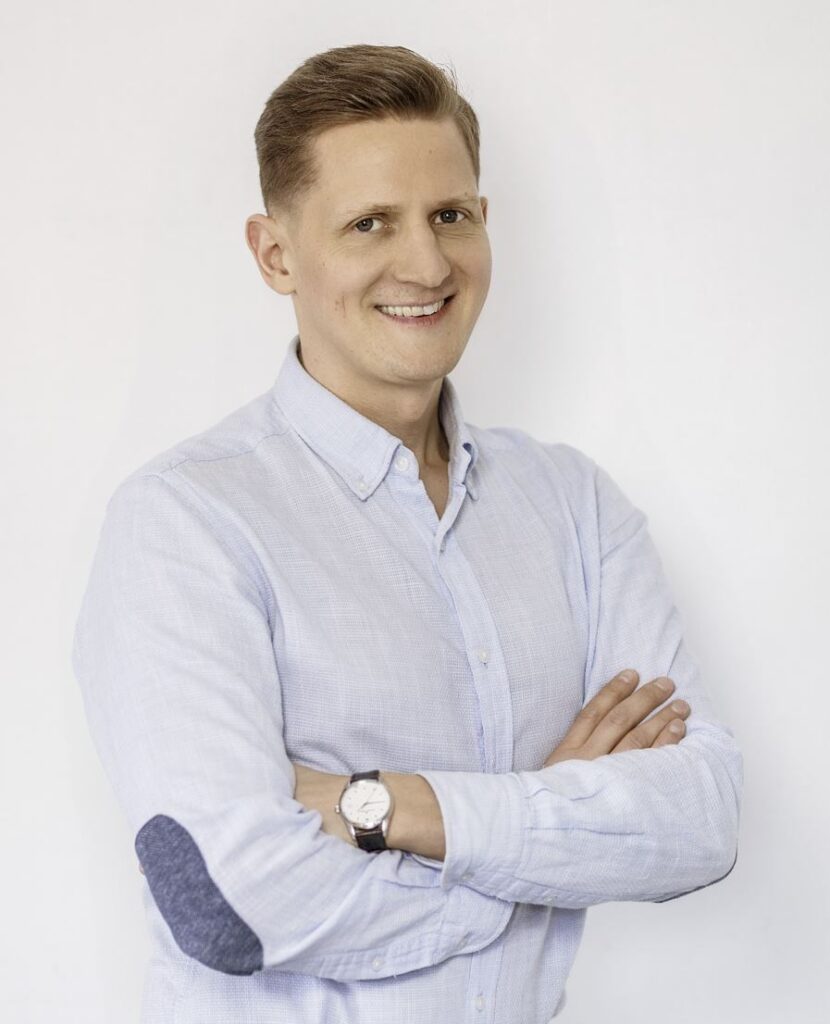
How did your career develop after studies?
My career started already during my studies. Already in my third year I got a job as a power tool manager, selling Hitachi power tools, it was of course part-time, but it was my first official job in an office, because until then I had only earned money by doing various unskilled jobs during the summer. In the last year of studies, we got in touch with my teacher Algirdas Baltrušaitis, with whom we started to design glued wood structures. Probably thanks to him, I realized that the work of a designer is in a certain sense not only technical, but also creative. Wooden structures are used where aesthetics and comfort are required. I worked in several jobs at the same time until the 2008 crisis happened, which made me think hard about my future career plans. In 2009, the Bridges Department of “Kelprojektas” expanded, so I sent my CV. At that time, Gintaras Bajoras (a well-known bridge engineer) hired me. And the fact that I have been working here for 12 years is some proof that the company has interesting jobs and opportunities for improvement. The people I had to work with had a lot of experience and I would like to remember a few of them: Juozas Plavinskas, Vaidas Mickevičius, Žana Lašienė, Modestas Tvysa, there were others. Here I felt the potential and opportunities of a large company to accumulate engineering knowledge and see how infrastructure objects of state significance are developed.
Tell us what your working day looks like.
For me, work starts at 8 o’clock. however, I come to work between 7-8 am. The day starts with the appointment calendar. You need to prepare for meetings, which dictates the daily and work order in advance. Most of my meetings are in English or Swedish. Working days are not the same or monotonous throughout the year. There are days when I only do calculations, or vice versa, most of the time I have to distribute work and attend meetings. Most often, it is work at a desk at home or in the office. There are also business trips, but their number has decreased significantly due to the quarantine restrictions. The best days are those when you learn or create something new, realize hidden things not described in books. Boring ones, when the whole day is devoted to meetings, coordination, and other administrative matters.
Remember what are the biggest projects you have worked on and what are you currently working on?
The first major project I worked on was Vilnius South Ring Road. Approaching Vilnius on the A1 highway, you can turn right towards Belarus, where you can see several new buildings nearby, still in the territory of Vilnius. There were several large vehicular overpasses. A rather interesting project was the reconstruction of the two-level intersection with the railway on Gediminas Street in Marijampolė. It was necessary to design a tunnel and retaining walls in difficult geological conditions.
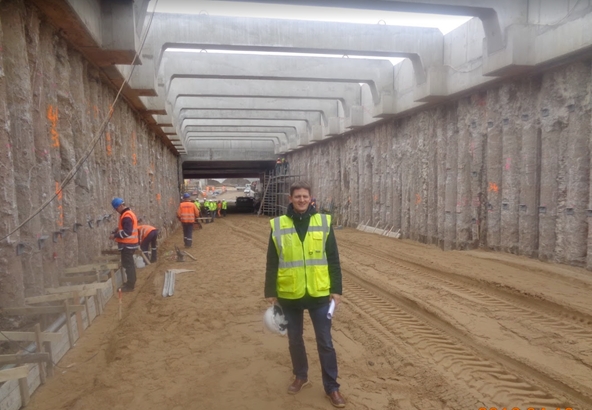
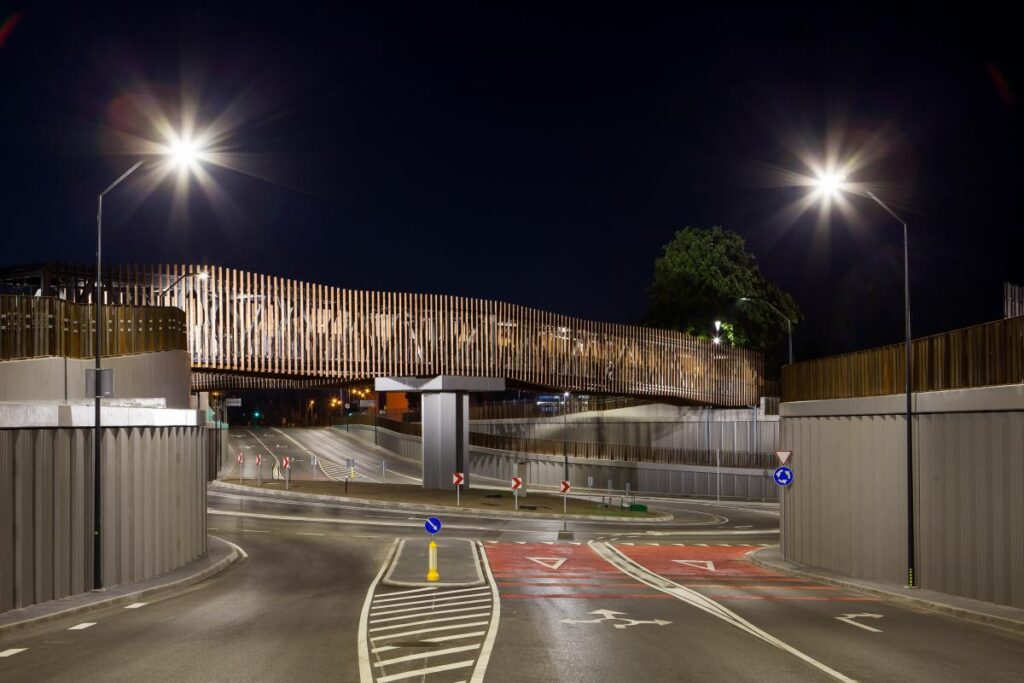
Marijampolės Gediminas st. reconstruction of a two-level intersection. Construction and completed project.
I started working with Swedish projects in 2015. The projects there are much bigger than in Lithuania. One of the more interesting projects in Slussen, in the center of Stockholm, where we performed detailed calculations of reinforced concrete quays.
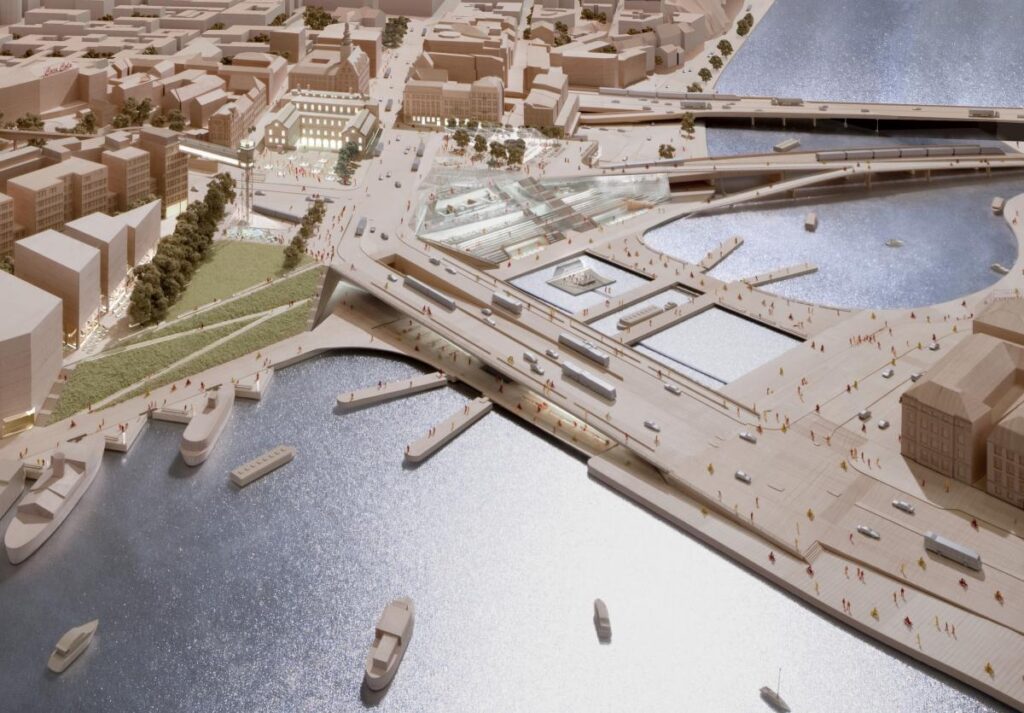
Slussen, Stocholm
For the last two years I have been working on the Mälarbanan project, where two railway tracks are changed to four in the urban area. It was interesting to perform preliminary calculations of rather complex structures. I am currently continuing work on the next section of the Mälarbanan project, where we are designing retaining and acoustic walls.
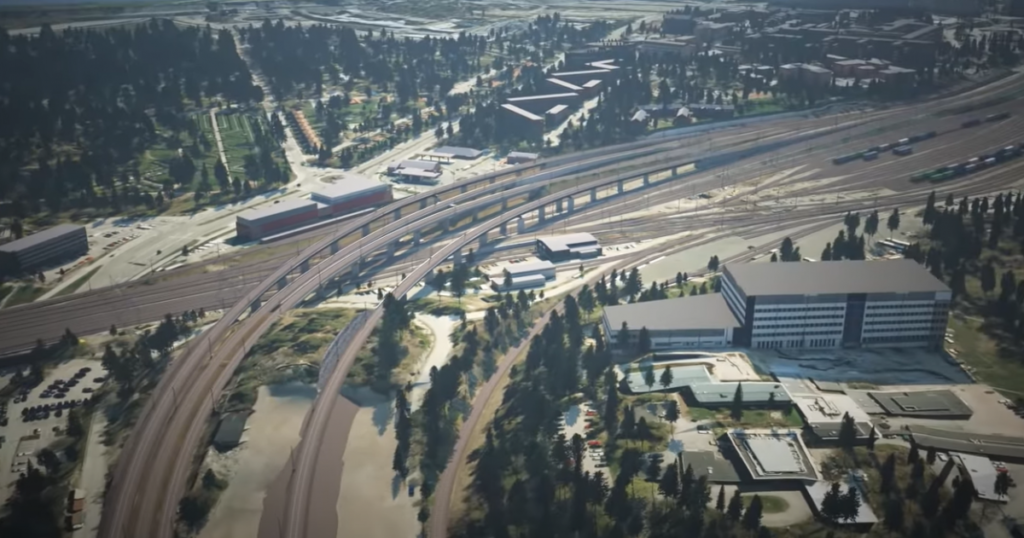
Mälarbanan
How has the bridge engineer specialty changed in recent years?
In this specialty, as in other fields, a lot of digitization has appeared. Once it was a difficult transition from drawing boards to AutoCAD, now we are transitioning from AutoCAD to 3D parametric modeling. More complex tasks also require programming knowledge. In the field of construction calculations, probably not much has changed in the last 20 years, maybe only to the extent that there are a lot of ready-made computer programs for construction calculations. This makes the engineer’s work a little easier, he can do more tasks at once and thus accumulate experience in a shorter time.
What fascinates and motivates you the most in this job?
No matter how banal it is, it is an opportunity to improve. This specialty requires attentiveness, concentration, and responsibility, but when you see built bridges or other structures, you feel that you have done something useful. Maybe it motivates a little. You are an ordinary person, but you contribute to big projects that people use later.
What personal, character qualities are needed in this job?
The work is specific, people must be curious, must want to delve into details, and must also be stubborn when looking for answers to questions or trying to solve tasks independently. Still, you need to read a lot, constantly learn. I would say patience and concentration are one of the most important qualities. If we add communication, initiative, and creativity to that, it would be a great combination.
And what does your free time look like? What are your hobbies and activities after work?
At the moment, it is safe to say that family is my main free time. My wife would laugh here and say that work is all my free time. And seriously when I’m tired, I watch Netflix movies, mostly documentaries or stories. When there is no tension at work, I read historical books and historical novels. Sometimes I read articles on various topics and listen to “podcasts” in foreign languages. I started to get a little interested in investing. I like sports. I used to play basketball often, now I sometimes play outdoor tennis, swim in the pool, and run in the summer.
